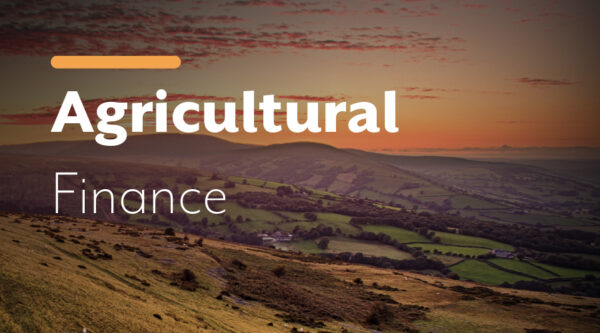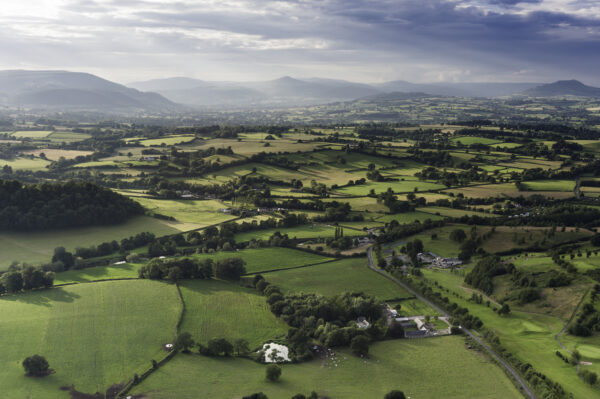

With agricultural show season in full swing and the flagship Royal Welsh Show taking place this month, we can expect lots of discussion about the state of farming, government support schemes and the changes to Inheritance Tax. Whilst those are of course important topics, the pace of technological change happening in the sector, and particularly the increasing use of artificial intelligence (“AI”), is likely to be one of the most critical influencers of success for a farming business over the next 5-10 years.
With that in mind, Rory Hutchings, Head of HCR’s Agriculture and Estates team, caught up with Frank Jennings, Partner in HCR’s Technology and Innovation team, to discuss the areas AI is likely to impact and what those starting their AI journey need to be mindful of.
AI is not going to replace farmers and the intuition that comes with years of experience. That said, there is a danger that farmers that embrace AI will replace those that do not. Below are five realistic and affordable ways that AI and other technologies can earn their keep on the farm.
-
Precision crop monitoring
Using drones or fitting cameras to your tractors can offer an affordable upgrade to manual crop monitoring. It can spot pests, diseases, nutrient gaps and missing animals before you can. This lets you spray only where you need to, which cuts your pesticide bills and saves you time. Naturally, it won’t replace years of experience, and you should be prepared for kit glitches and false positives. Make sure you don’t stray beyond your own farm and photograph your neighbour’s patio or the holiday home visitors next door. Stick to the UK Dronecode and confirm in writing who owns the images and analysis – you or the software provider.
-
Predictive weather and irrigation
All farmers are subject to the changeable British weather, as well as the Farming Rules for Water. Cost-effective machine-learning models can analyse multiple forecasts, soil-moisture readings and satellite feeds to help generate precise watering schedules. This can save you watering crops unnecessarily and enable harvesting at the right time, boosting your yields. However, you’ll need to be the final judge so that if the model gets it wrong, you don’t end up with drowned wheat or thirsty strawberries. Remember, most software and AI providers will seek to cap their exposure to the fee you have paid for the software, leaving you high and dry (or wet).
-
Livestock health tracking
Wearable collars and ear tags can help spot lameness, mastitis or calving distress hours earlier than you’d otherwise be able to. Analysing data like this could help cut your vet bills by getting treatment early and improving welfare (and Red Tractor scores). Again, these devices aren’t infallible, so you need to be cautious and maintain your own visual checks. Ensure you retain any data from these devices, as they can help with sale prices later, and that you can gain access to it should a dispute arise with the provider.
-
Smart feed management
Feed management systems can examine herd data, weather patterns and market prices to optimise rations and reduce waste. This can help you cut feed costs and improve animal health. Remember, you must always cross-check AI-generated feed plans. If the data is suggesting something out of the norm, you might want to check with your vet first.
-
Automated machinery and robotics
Driverless tractors, robotic weeders and automated milking parlours can be expensive, but you can buy affordable retrofit kits to upgrade your existing equipment. You could schedule certain tasks to run through the night to help trim labour costs and the arguments over tea-break rotas. However, a rogue robot that flattens a rambler or a cow would be an unfortunate expense. You would need to fence off autonomous kit and display clear warnings. Negotiate indemnities and insurance obligations with the supplier and keep in mind that software contains bugs that pesticide won’t neutralise.
What next? Or how to keep the lawyers (and your bank manager) happy
- Data privacy: If your use of tech and / or AI involves collecting personal data from staff, contractors and neighbours, then register with the Information Commissioner’s Office as a data controller and issue clear privacy notices to staff
- Compliance: Cross-check all AI outputs with existing rules, Defra schemes, pesticide registers and animal-welfare codes before acting. Remember, “the computer told me to” is no defence to the Rural Payments Agency
- Contracts: Insist on plain English service levels, uptime guarantees and an exit route that lets you keep historical data in a workable format. Don’t forget that providers will limit their liability, but may increase yours
- Liability: Make sure your insurance extends to software failure
- Cyber-security: Change default passwords, store backups offline, and train staff to spot phishing. A hacked tractor is more frightening than an angry bull.
Embracing AI and farm tech is a savvy move but treat a new tool like a prize pedigree: feed it good data, keep it under control and read the paperwork before you let it loose in the field. Unlike artificial insemination, no gloves are required – just a healthy dose of caution and common sense.










